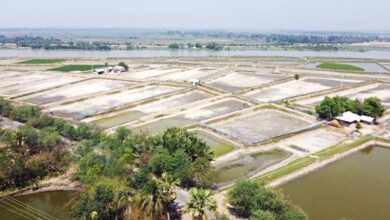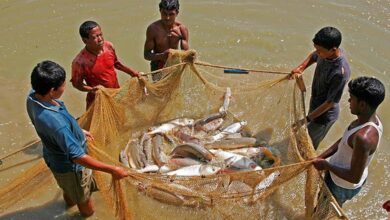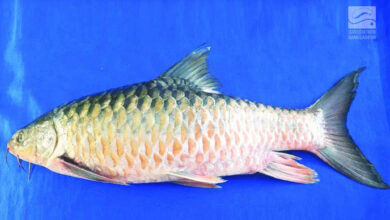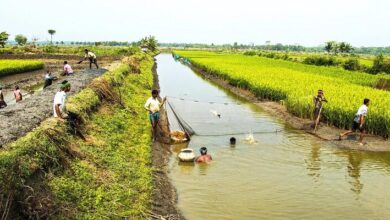
The stock of natural fish species, particularly “Rohu,” is dwindling, but scientists have devised a way to preserve the original breed and improve production at the same time.
Within Bangladesh, fish constitutes more than 60% of the intake of animal protein, with the bulk sourced from local aquaculture. Rohu, one of the significant aquaculture species in Bangladesh, plays a crucial role in providing sustenance and generating money for underprivileged farmers.
In spite of this, private hatcheries are indiscriminately crossing different species, including Rohu, for purely commercial gain, putting the existence of the original breed in danger. The widespread concern in hatchery stocks is caused by unplanned hybridization, adverse selection, and mating from a finite population.
Furthermore, it was revealed that hatchery proprietors were intentionally producing unplanned and unregulated crossbreeds of several fish species, like different carps – Rohu, Rohu – mrigel, and carp – mirror carp.
Several hatchery owners and employees breed fish using low-quality broods that produce sickly or underweight offspring, which results in an excess of deaths in aquaculture ponds.
Their only motive for engaging in this malpractice is to capture one of the most lucrative markets: fish fries and fingerlings. The local farmers mistakenly buy these crossbreeding fry, resulting in a deficient level of production.
To overcome this problem, scientists at Bangladesh Fisheries Research Institute (BFRI) have developed a new variety called ‘Subarna Rohu,’ which was bred from Rohu of different rivers to produce a variety with a distinct flavor.
Dr. Yahia Mahmud, the director general of BFRI, states that the original Rohu breed is facing imminent extinction due to hatchery owners engaging in crossbreeding Rohu with other fish species, resulting in genetic deterioration and inbreeding depression.
Contrary to the practices of private hatcheries that rely on arbitrary procreation, BFRI developed the high-yielding Subarna Rohu by cross-matching high-quality Rohu from rivers such as the Halda, Jamuna, and Brahmaputra.
Researchers from BFRI hope the new variety of Rohu will enhance production, protecting the native breed.
However, this is not the first time the rohu gene has been improved in Bangladesh. The WorldFish launched the Rohu Genetic Improvement Program in 2012, which involved the collection of spawn from the Halda, Padma, and Jamuna rivers. After three generations of selection, the program developed the third-generation rohu in 2020-2021. There was a 37% increase in the growth rate of the WorldFish G3 rohu strain when compared to the conventional rohu strain.
Dr. Mahmud claims that BFRI’s Subarna Rohu is the fourth generation of fish with a production that is 20.12 percent higher than current kinds. The variety was produced after a decade of intensive study, and it has been made available for public consumption.
As part of the golden jubilee celebrations of Bangladesh’s independence in 2021, BFRI released Subarna Ruhi fries for reproduction to government and private hatcheries for reproduction. As a result, hatcheries have begun marketing the fish in major kitchen markets in the capital and elsewhere.
Officials concerned say a Subarna Rohu may weigh as much as 3 kilograms due to its red complexion and larger size than ordinary Rohu.
Bangladesh produces 46.21 lakh tons of fish, with Rohu securing the top spot as a single species with 11.32 percent. Based on fish production in pond aquaculture in Bangladesh, Rohu (250,000 tons) ranks third after Pangas (450,000 tons) and Tilapia (320,000 tons).
Rohu accounts for 14.10 percent of the total fish production in the country, almost half of which comes from cultivated fisheries.
According to WorldFish statistics, Bangladesh produces 319,000 tons of Rohu fish per year, valued at over US$950 million wholesale.
With the introduction of the Subarna Rohu, BFRI scientists calculated that fish farmers could earn an additional Taka 3,000 crore a year.
A target of 8.6 million tons of fish per year is set by the Bangladeshi government by 2041. It will be much easier for Bangladesh to achieve this target with the improved genetic breed of “Subarna Rohu.”
Jaber Bin Abdul Bari
Department of Oceanography, NSTU




